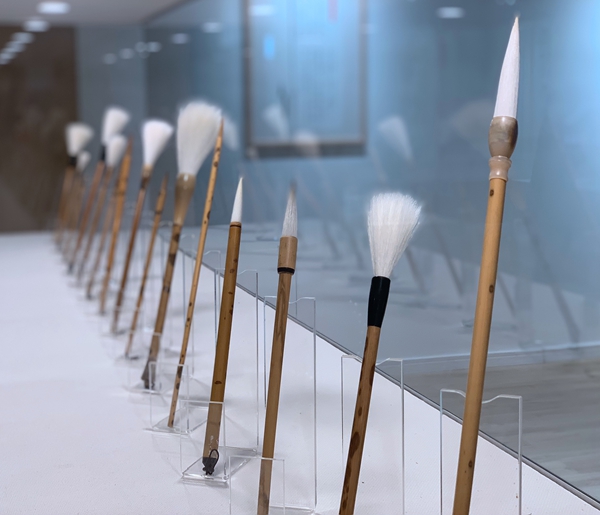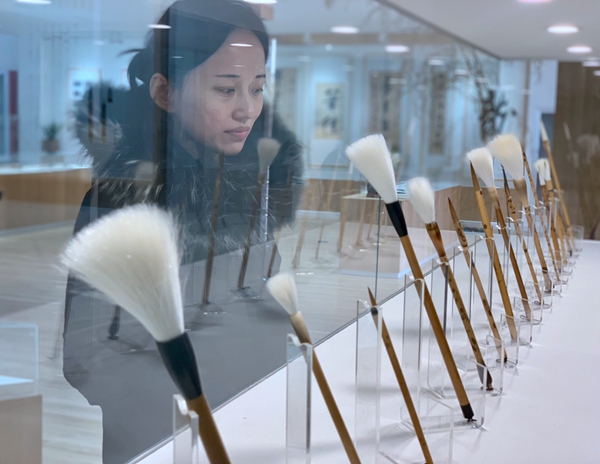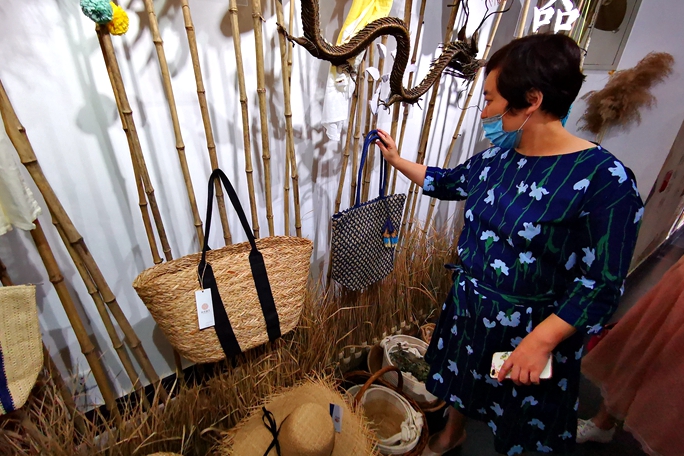Museum promotes traditional calligraphy culture in Shandong
Backed by its time-honored and prosperous brush pen making industry, Yinping town in Zaozhuang, Shandong province has opened a museum dedicated to promoting traditional calligraphy culture.
The museum, launched in 2017, is designed to better inherit and protect the traditional craft of brush making, promote local cultural creative industry and fuel Yinping's "culture + tourism" development.
Covering an area of 24,642 square meters with a total investment of 310 million yuan ($45 million), the museum complex covers a brush pen industry cluster including function areas for producing, displaying and trading.
Yinping's brush making techniques originated in the Eastern Han Dynasty (25-220), and were passed on and developed in following dynasties.
Shuyuan Pen Co Ltd was established in 1967 to realize the large-scale production of writing brushes as well as expand trade.
In recent years, Shuyuan has been expanding overseas markets. Its products are exported to Japan, South Korea and other Asian countries and regions. It produces more than 4 million brushes of over 300 different kinds annually, with economic output of 56 million yuan.
As one of the "four treasures of the study," a Chinese term which refers to the ink brush, inkstick, paper and inkstone used in calligraphy, the brush is a traditional artist's tool.
It takes more than 100 steps to make an ink brush. The brushes are made from the hair of an animal such as a goat or rabbit. The brush handle is often constructed of bamboo, although materials such as jade or ivory also can be used.
Yinping's traditional writing brush making craft was listed as a Shandong provincial-level intangible cultural heritage in 2016.
 |
|
Multifarious writing brushes are displayed at the traditional brush pen museum in Yinping town of Zaozhuang, East China's Shandong province. [Photo by Wang Qian/China Daily] |
 |
|
A visitor takes a closer look at the exhibits at the brush pen museum in Yinping town of Zaozhuang, East China's Shandong province, Dec 13, 2018. [Photo by Wang Qian/China Daily] |

 Shandong Culture and Tourism Consumption Season
Shandong Culture and Tourism Consumption Season Culture, tourism sectors pick up in Shandong as epidemic wanes
Culture, tourism sectors pick up in Shandong as epidemic wanes

